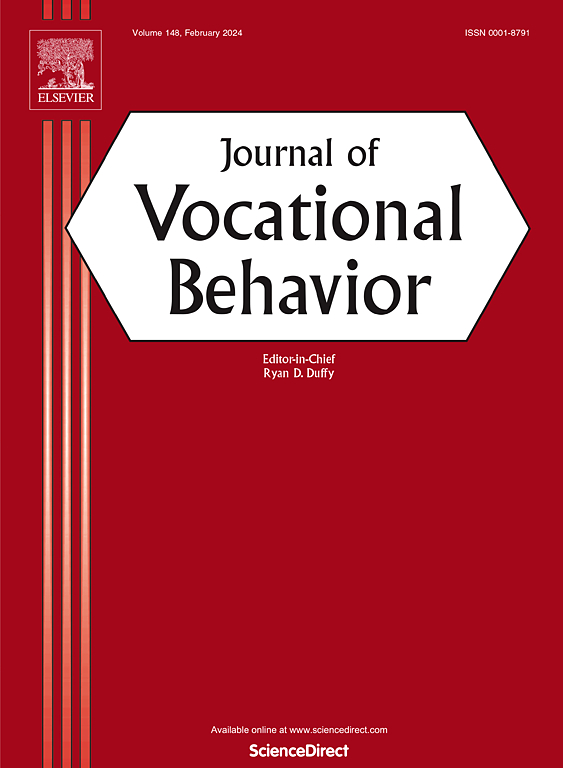Beyond one-size-fits-all in school-to-work transition success: The role of career competency profiles
IF 5.2
1区 心理学
Q1 PSYCHOLOGY, APPLIED
引用次数: 0
Abstract
Although scholarly work has demonstrated that career competencies are essential for a successful school-to-work transition, individual differences in career competencies have rarely been studied. This is problematic, because it has prevented researchers from attaining a more fine-grained understanding of how specific patterns of career competencies may help different individuals navigate this transition successfully. Therefore, using latent profile analysis (LPA), this paper examines: (a) different configurations (i.e., profiles) of career competencies; (b) predictors of profile membership; and (c) the impact of these profiles on school-to-work transition outcomes. Sample 1 (n = 544) revealed six distinct career competency profiles that emerge in the final year of education: the underdeveloped, drifter, social explorer, seeker, navigator, and mature profiles. In addition to the level difference between the navigator and mature profiles, there were shape differences among the remaining profiles. Sample 2 (nT1 = 1388) replicated the six profiles and revealed that the career competency profiles in individuals' final year in education predicted employment status, perceived employability, underemployment, and perceived transition satisfaction one year after graduation. Results on age, sex, and work experience as predictors of profile membership were mixed. Overall, this study contributes to the school-to-work transition literature by highlighting the importance of considering individual differences in career competencies for school-to-work transition success.
在从学校到工作的成功过渡中,除了一刀切之外:职业能力概况的作用
尽管学术研究表明,职业能力对于成功从学校到工作的过渡至关重要,但职业能力的个体差异却很少得到研究。这是有问题的,因为它阻碍了研究人员更细致地了解职业能力的特定模式如何帮助不同的个人成功地度过这一转变。因此,本文运用潜在特征分析(latent profile analysis, LPA)来检验:(a)职业胜任力的不同配置(即特征);(b)剖面隶属度预测因子;(c)这些概况对从学校到工作的过渡结果的影响。样本1 (n = 544)揭示了在教育的最后一年出现的六种不同的职业能力特征:不发达型、漂流型、社会探索者型、探索者型、领航者型和成熟型。除了导航仪剖面和成熟剖面之间的水平差异外,其余剖面之间还存在形状差异。样本2 (nT1 = 1388)复制了这6个特征,发现个人在最后一年的职业能力特征预测了毕业后一年的就业状况、感知就业能力、就业不足和感知过渡满意度。年龄、性别和工作经验作为档案成员预测因素的结果是混合的。总体而言,本研究通过强调考虑职业胜任力的个体差异对学校到工作的成功过渡的重要性,为学校到工作的过渡文献做出了贡献。
本文章由计算机程序翻译,如有差异,请以英文原文为准。
求助全文
约1分钟内获得全文
求助全文
来源期刊

Journal of Vocational Behavior
PSYCHOLOGY, APPLIED-
CiteScore
13.10
自引率
5.40%
发文量
85
期刊介绍:
The Journal of Vocational Behavior publishes original empirical and theoretical articles offering unique insights into the realms of career choice, career development, and work adjustment across the lifespan. These contributions are not only valuable for academic exploration but also find applications in counseling and career development programs across diverse sectors such as colleges, universities, business, industry, government, and the military.
The primary focus of the journal centers on individual decision-making regarding work and careers, prioritizing investigations into personal career choices rather than organizational or employer-level variables. Example topics encompass a broad range, from initial career choices (e.g., choice of major, initial work or organization selection, organizational attraction) to the development of a career, work transitions, work-family management, and attitudes within the workplace (such as work commitment, multiple role management, and turnover).
 求助内容:
求助内容: 应助结果提醒方式:
应助结果提醒方式:


